 W
WAs the location of many major battles, New Jersey was pivotal in the American Revolution and the ultimate victory of the American colonists. This important role earned it the title of Crossroads of the American Revolution.
 W
WBear Tavern is an unincorporated community located within Hopewell Township in Mercer County, New Jersey, United States.
 W
WBulls Ferry is an area along the Hudson River, just north of Weehawken Port Imperial in the towns of West New York, Guttenberg and North Bergen in New Jersey. It takes its name from a pre-Revolutionary settlement belonging to the Bull family, who operated a row-and-sail ferry to the burgeoning city of New York across the river.
 W
WBurdett's Landing, also called Burdett's Ferry, is a site on the west bank of the Hudson River located in Edgewater, New Jersey. Ferries initially used Burdett's Landing as a departure point for transporting agricultural produce from New Jersey across to New York. In the Revolutionary War it played a role in the movement of American supplies and soldiers, and in the 19th century it served as a landing for steamboats. There is no longer a wharf or ferry service at the landing.
 W
WThe Capture of the Hessians at Trenton, December 26, 1776 is the title of an oil painting by the American artist John Trumbull depicting the capture of the Hessian soldiers at the Battle of Trenton on the morning of Thursday, December 26, 1776, during the American Revolutionary War. The focus is on General George Washington aiding the mortally wounded Hessian Colonel Johann Gottlieb Rall. Nearly 900 Hessians were captured at the battle. It is one of Trumbull's series of historical paintings on the war, which also includes the Declaration of Independence and The Death of General Mercer at the Battle of Princeton, January 3, 1777. The painting is on view at the Yale University Art Gallery in New Haven, Connecticut.
 W
WThe Cedar Bridge Tavern is a historic building located in the New Jersey Pine Barrens in Barnegat Township. It was built around 1740 and is believed to be the oldest intact bar in the United States. It is located at the site of the last skirmish of the American Revolutionary War. It is on the National Register of Historical Places.
 W
WThe Death of General Mercer at the Battle of Princeton, January 3, 1777 is the title of an oil painting by the American artist John Trumbull depicting the death of the American General Hugh Mercer at the Battle of Princeton on Friday, January 3, 1777 during the American Revolutionary War. The painting was Trumbull’s first depiction of an American victory. It is one of a series of historical paintings on the war, which also includes the Declaration of Independence and The Capture of the Hessians at Trenton, December 26, 1776.
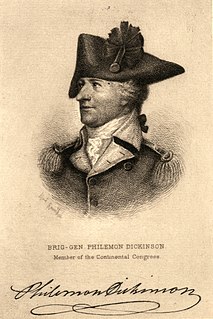 W
WThe Forage War was a partisan campaign consisting of numerous small skirmishes that took place in New Jersey during the American Revolutionary War between January and March 1777, following the battles of Trenton and Princeton. After both British and Continental Army troops entered their winter quarters in early January, Continental Army regulars and militia companies from New Jersey and Pennsylvania engaged in numerous scouting and harassing operations against the British and German troops quartered in New Jersey.
 W
WFort Billingsport, at Billingsport in Paulsboro, Gloucester County, New Jersey, United States, was an American Revolutionary War fort on the Delaware River. The site of the fort is now a public park of the same name, located at the Plains Terminal at the Port of Paulsboro near two oil refineries.
 W
WFort Lee Historic Park is located atop a bluff of the Hudson Palisades overlooking Burdett's Landing, known as Mount Constitution, in Fort Lee, New Jersey. Native Americans appear to have lived in the area for thousands of years before the arrival of Europeans. The bluff was the site of George Washington's 1776 encampment opposite Fort Washington at the northern end of Manhattan. Fort Lee is named for General Charles Lee. The site is a reconstruction of the encampment including the blockhouse, battery, quarters as well as a visitors center. It is part of Palisades Interstate Park.
 W
WFort Mercer was a earthen fort on the Delaware River on its New Jersey shore constructed by the Continental Army during the American Revolutionary War. Built by Polish engineer Thaddeus Kosciuszko under the command of George Washington, Fort Mercer was built in 1777 to block the approach to Philadelphia, Pennsylvania in concert with Fort Mifflin on the Pennsylvania side. Fort Mercer was located in an area called Red Bank, in what is now the borough of National Park, Gloucester County, New Jersey. The fort was named in honor of Brigadier General Hugh Mercer who had died earlier that year at the Battle of Princeton. The fort's site is now part of Red Bank Battlefield Historical Park, which includes a monument and museum. Several cannons attributed to British warships lost supporting the attack on the fort, and others found buried at the fort itself, are in the park.
 W
WThe French Arms Tavern was a structure in Trenton, New Jersey, that served as the capitol of the United States and meeting place of the Congress of the Confederation from November 1, 1784, to December 24, 1784. The building was located at the southwest corner of King and Second Streets from 1730 until 1837 when it was tore down.
 W
WThe Gabreil Daveis Tavern House, also known as the Hillman Hospital House, is a historic building in the Glendora section of Gloucester Township, Camden County, New Jersey, United States. This tavern was built in 1756 near the Big Timber Creek and housed boatmen who used the creek to ship goods to Philadelphia. It was designated a hospital by George Washington during the Revolutionary War.
 W
WGeorge Washington's crossing of the Delaware River, which occurred on the night of December 25–26, 1776, during the American Revolutionary War, was the first move in a surprise attack organized by George Washington against Hessian forces in Trenton, New Jersey, on the morning of December 26. Planned in partial secrecy, Washington led a column of Continental Army troops across the icy Delaware River in a logistically challenging and dangerous operation.
 W
WHamilton Douglas Halyburton was a British Lieutenant who died at Sandy Hook, New Jersey.
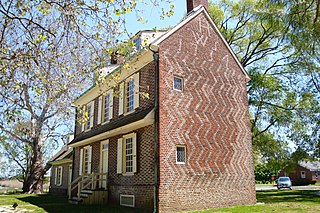 W
WThe Hancock House is a historic structure in the Hancock's Bridge section of Lower Alloways Creek Township, Salem County, New Jersey, United States. It was the site of the 1778 Hancock's Bridge massacre. The site is on the National Register of Historic Places.
 W
WThe Hobart Gap is a pass and road through the Watchung Mountains in Northern New Jersey. During the American Revolutionary War, Hessian General Baron Wilhelm von Knyphausen attempted to seize the Hobart Gap, now crossed by present-day Route 24, in order to attack the American headquarters in Morristown for the British. He was met with successful resistance by General Nathanael Greene, and was eventually defeated by the Continental Army and the New Jersey Militia at the Battle of Springfield.
 W
WThe Indian King Tavern was a colonial American tavern in Haddonfield, Camden County, New Jersey, United States, which was the site of a 1777 meeting of the New Jersey General Assembly that officially ratified the Declaration of Independence and adopted its Great Seal. It was the first State Historic Site, adopted as such in 1903. Its original structure remains largely intact. It is listed on the National Register of Historic Places.
 W
WShepard Kollock, Jr. was an editor and printer, who was active in colonial New Jersey during the period of the American Revolutionary War. He also held various government positions in the newly founded state of New Jersey during the early 1800s.
 W
WA series of sites along the Washington–Rochambeau Revolutionary Route have been listed on the U.S. National Register of Historic Places or otherwise recognized and preserved. Buildings or roadway or other artifacts at these sites have been preserved and still evoke the army's passage in 1781 and its return in 1782. A multiple-property documentation study completed in 2001 addressed many of the Connecticut sites, and outlined criteria for NRHP-eligibility of others.
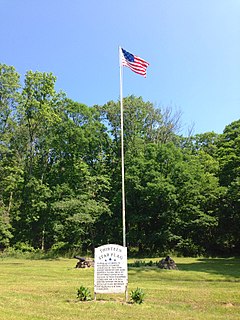 W
WThe Middlebrook encampment was a seasonal encampment of the Continental Army, commanded by General George Washington, during the American War for Independence near Middle Brook in Bridgewater Township, New Jersey in 1777 and again in 1778–79. The site includes part of the ridge of the First Watchung Mountain. Its position provided a natural fortress not only protecting the Continental Army but also overlooking the plains towards New Brunswick, where the British forces were stationed in 1777. The strategic strength of the position contributed ultimately to the success of the Continental Army by lengthening the war and wearying the British forces.
 W
WNancy was an American sailing vessel, noted in sources as either a brig or a brigantine, that was chartered to transport war supplies during the American Revolutionary War. After learning that independence had been declared, her captain, according to his daughter, raised the first American flag in a foreign port. Evading British capture, she was later intentionally destroyed with a huge blast on June 29, 1776, during the Battle of Turtle Gut Inlet near Cape May, New Jersey.
 W
WNassau Hall is the oldest building at Princeton University in Princeton, Mercer County, New Jersey, United States. In 1783 it served as the United States Capitol building for four months. At the time it was built in 1756, Nassau Hall was the largest building in colonial New Jersey and the largest academic building in the American colonies.
 W
WNew Bridge was a prosperous mill hamlet, centered upon a bridge strategically placed at the narrows of the Hackensack River. In the American Revolution, New Bridge Landing was the site of a strategic bridge crossing the Hackensack River, where General George Washington led his troops in retreat from British forces November 20, 1776. Eleven engagements took place here throughout the war. The current Draw Bridge at New Bridge was installed in 1889 and added to the National Register of Historic Places on July 5, 1989. The area is now a New Jersey historic site in portions of New Milford, River Edge, Hackensack and Teaneck in Bergen County, New Jersey, United States.
 W
WThe Northern theater of the American Revolutionary War after Saratoga consisted of a series of battles between American revolutionaries and British forces, from 1778 to 1782 during the American Revolutionary War. It is characterized by two primary areas of activity. The first set of activities was based around the British base of operations in New York City, where each side made probes and counterprobes against the other's positions that sometimes resulted in notable actions. The second was essentially a frontier war in Upstate New York and rural northern Pennsylvania that was largely fought by state militia companies and some Indian allies on the American side, and Loyalist companies supported by Indians, British Indian agents, and occasionally British regulars. The notable exception to significant Continental Army participation on the frontier was the 1779 Sullivan Expedition, in which General John Sullivan led an army expedition that drove the Iroquois out of New York. The warfare amongst the splinters of the Iroquois Six Nations were particularly brutal, turning much of the Indian population into refugees.
 W
WThe Pennsylvania Line Mutiny was a mutiny of Continental Army soldiers, who demanded higher pay and better housing conditions, and was the cause of the legend and stories surrounding the American heroine Tempe Wick. The mutiny began on January 1, 1781, and ended with a negotiated settlement on January 8, 1781. The negotiated terms were finally concluded by January 29, 1781. The mutiny was the most successful and important insurrection of Continental Army soldiers during the American Revolutionary War.
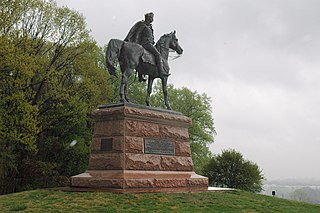 W
WThe Philadelphia campaign (1777–1778) was a British effort in the American Revolutionary War to gain control of Philadelphia, which was then the seat of the Second Continental Congress. British General William Howe, after failing to draw the Continental Army under General George Washington into a battle in northern New Jersey, embarked his army on transports, and landed them at the northern end of Chesapeake Bay. From there, he advanced northward toward Philadelphia. Washington prepared defenses against Howe's movements at Brandywine Creek, but was flanked and beaten back in the Battle of Brandywine on September 11, 1777. After further skirmishes and maneuvers, Howe entered and occupied Philadelphia. Washington then unsuccessfully attacked one of Howe's garrisons at Germantown before retreating to Valley Forge for the winter.
 W
W"Pine Robbers" were loosely organized, criminal, gangs and marauders who were British sympathizers and Loyalists during the American Revolutionary War and used the Pine Barrens of New Jersey to wreak havoc in the area. The pine barrens created densely forested terrain where concealment of guerrilla and criminal activities could easily be carried out.
 W
WProprietary House in Perth Amboy, New Jersey, United States, is the only proprietary governor's mansion of the original Thirteen Colonies still standing. Overseen by architect and builder John Edward Pryor, construction began in 1762 and was completed in 1764. The Georgian style "mansion" was first occupied by Chief Justice Frederick Smyth by rent and approval of "The Proprietors" on April 10, 1766, to 1773. In May 1773, the mansion was repaired and fitted to be the residence of the royal governor of New Jersey, and leased by the proprietors as such.
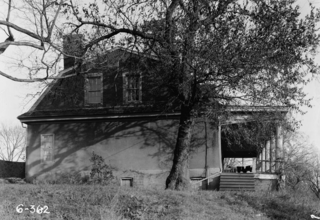 W
WRoss Hall was a historic colonial farmhouse located on River Road in Piscataway, New Jersey. It was built c. 1739 by Edward Antill and is also known as the Edward Antill House. In 1768, it was purchased by its namesake, Dr. Alexander Ross.
 W
WThe Staats House, also known as the General Baron von Steuben Headquarters, is a historic building located at 17 Von Steuben Lane in South Bound Brook, Somerset County, New Jersey. Constructed c. 1740, it is now known as the Abraham Staats House after its second owner. In 1779, during the second Middlebrook encampment of the American Revolutionary War, it served as the headquarters for Prussian-American General Friedrich Wilhelm von Steuben. The house was added to the National Register of Historic Places on December 4, 2002, and noted as representing "one of the finest remaining buildings from the second phase of Dutch immigration and settlement in the Raritan Valley".
 W
WThe Steuben House, also known as the Zabriskie-Steuben House, is a noted example of Bergen Dutch sandstone architecture, located at New Bridge Landing on the Hackensack River in River Edge, in Bergen County, New Jersey, United States.
 W
WThe Three Pigeons was a prominent and famous meeting place in Bergen Township, New Jersey during the revolutionary period, and was used historically as a landmark as well as a popular place for hosting special occasions.
 W
WThe Battle of Trenton was fought on December 26, 1776, during the American Revolutionary War campaign for New Jersey. In a surprise attack, the Continental Army led by George Washington attacked the winter quarters of a brigade composed primarily of German troops from Hesse-Kassel in Trenton, New Jersey. The Hessian brigade was under the command of Colonel Johann Rall; he died of wounds sustained in the battle, and about two thirds of his men were taken prisoner. It was the first major victory after a long string of defeats that had resulted in the loss of New York City, and was a significant boost to American morale. It was followed by two more American victories, first in a second battle at Trenton on January 2, 1777, and then on January 3 at Princeton.
 W
WThe Van Horne House is a historic building at 941 East Main Street near Bound Brook in Bridgewater Township, Somerset County, New Jersey. The house was built c. 1750 and also known as Phil's Hill, after its owner, Philip Van Horne. It served as the headquarters for American General Benjamin Lincoln in 1777, during the American Revolutionary War, in particular the Battle of Bound Brook. Later, it served as the headquarters for American General William Alexander, Lord Stirling during the second Middlebrook encampment (1778–79). The house, on the early-18th-century Old York Road that connected Philadelphia to New York City, was a New Jersey landmark during the war. Since 2002, the Heritage Trail Association has used the house as its headquarters, including an exhibit space. It was added to the National Register of Historic Places on March 8, 2002, for its locally significant Colonial Revival architecture from 1937 to 1944.
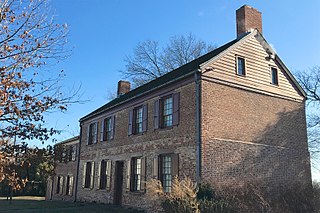 W
WThe Van Veghten House is a historic building in the Finderne section of Bridgewater Township, New Jersey. The house was built c. 1725 and served as the headquarters of Quartermaster General Nathanael Greene during the second Middlebrook encampment (1778–79) in the American Revolutionary War. The Somerset County Historical Society owns the house and uses it as its headquarters, including a museum and library. The early-18th-century Old York Road, connecting Philadelphia to New York City, passed by here. The house was added to the National Register of Historic Places on October 10, 1979, and noted as representing "one of the few remaining Raritan River mansions".
 W
WThe Jacobus Vanderveer House, also known as Knox House, is a U.S. Federal style house located just north of the community of Pluckemin in Bedminster Township, Somerset County, New Jersey at the junction of US 202 and 206 north of River Road. The house was added to the National Register of Historic Places on September 29, 1995, and noted as an "excellent example of a Dutch–American house". The Vanderveer /Knox House & Museum while owned by Bedminster Township, is operated under the direction of the Friends of the Jacobus Vanderveer House, a 501-C3 non-profit organization. The Jacobus Vanderveer House is situated on part of the 218 acres (0.88 km2) that make up River Road Park. The house was thought to be built somewhere in the mid-1770s by James (Jacobus) Vanderveer, son to Jacobus Vanderveer after the property was willed to him by his father.
 W
WThe Wallace House is a Georgian style historic house, which served as the headquarters of General George Washington during the second Middlebrook encampment (1778–79), located at 38 Washington Place, Somerville, Somerset County, New Jersey, United States. It was added to the National Register of Historic Places on December 2, 1970.
 W
WGeneral George Washington at Trenton is a large full-length portrait in oil painted in 1792 by the American artist John Trumbull of General George Washington at Trenton, New Jersey, on the night of January 2, 1777, during the American Revolutionary War. This is the night after the Battle of the Assunpink Creek, also known as the Second Battle of Trenton, and before the decisive victory at the Battle of Princeton the next day. The artist considered this portrait "the best certainly of those which I painted." The portrait is on view at the Yale University Art Gallery in New Haven, Connecticut, an 1806 gift of the Society of the Cincinnati in Connecticut. It was commissioned by the city of Charleston, South Carolina, but was rejected by the city, resulting in Trumbull painting another version.
 W
W"Washington Crossing the Delaware" is a sonnet that was written in 1936 by David Shulman. The title and subject of the poem refer to the scene in the 1851 painting Washington Crossing the Delaware by Emanuel Gottlieb Leutze. The poem is noted for being an anagrammatic poem – in this case, a 14-line rhyming sonnet in which every line is an anagram of the title.
 W
WThe Washington–Rochambeau Revolutionary Route is a 680-mile (1,090 km) series of roads used in 1781 by the Continental Army under the command of George Washington and the Expédition Particulière under the command of Jean-Baptiste de Rochambeau during their 14-week march from Newport, Rhode Island to Yorktown, Virginia. The route is a designated National Historic Trail with interpretive literature, signs, and exhibits that describe the key role of French diplomatic, military, and economic aid to the United States during the American Revolutionary War.